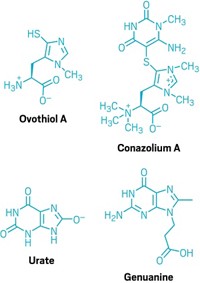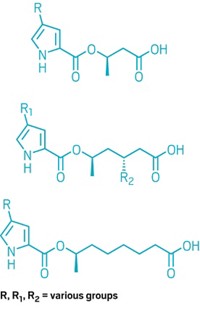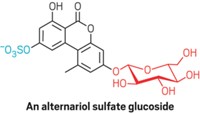Advertisement
Grab your lab coat. Let's get started
Welcome!
Welcome!
Create an account below to get 6 C&EN articles per month, receive newsletters and more - all free.
It seems this is your first time logging in online. Please enter the following information to continue.
As an ACS member you automatically get access to this site. All we need is few more details to create your reading experience.
Not you? Sign in with a different account.
Not you? Sign in with a different account.
ERROR 1
ERROR 1
ERROR 2
ERROR 2
ERROR 2
ERROR 2
ERROR 2
Password and Confirm password must match.
If you have an ACS member number, please enter it here so we can link this account to your membership. (optional)
ERROR 2
ACS values your privacy. By submitting your information, you are gaining access to C&EN and subscribing to our weekly newsletter. We use the information you provide to make your reading experience better, and we will never sell your data to third party members.
Toxicology
Gut Bacteria Liberate Hidden Toxins Found In Grains
Toxicology: The masked toxins currently slip past food safety monitoring
by Louisa Dalton
February 6, 2013

Crops such as wheat, corn, and peanuts sometimes harbor chemicals from molds that grow on the plants. Some of these compounds are seemingly harmless derivatives of toxins produced by the fungi. For the first time, researchers have shown that human gut bacteria can break down these compounds and release the toxins, which can cause gastrointestinal and neurological damage (Chem. Res. Toxicol., DOI: 10.1021/tx300438c).

The findings strongly suggest that these masked toxins may not stay hidden within our digestive tracts, and that government agencies may need to regulate the chemicals, the researchers say.
Scientists have long known that fungi, such as Fusarium graminearium, deposit toxins on food crops. These so-called mycotoxins can contaminate the food supply, causing a wide range of nasty effects and even death in people and livestock. As a result, many countries set a limit for the amount of mycotoxins in food and animal feed.
But in the past decade, scientists have discovered that mycotoxins can hide. The toxins are harmful to the crops themselves, so, as a defense strategy, the plants neutralize the mycotoxins by tacking on a sugar or sulfate group to the chemicals. Because of this chemical modification, these masked mycotoxins slip past current detection methods used by food safety inspectors. Also scientists don’t know much about the toxicity of the derivatives.
If cereal grains hold masked mycotoxins, “what happens to the compounds during human digestion?” asks Chiara Dall’Asta, a chemist at the University of Parma, in Italy. “Are they less toxic or as toxic as their parent compounds?”
To answer those questions, Dall’Asta and her colleagues simulated the entire human digestion process from mouth to large intestine in their laboratory. They watched what happened to three common masked mycotoxins in this simulated digestive tract. One compound was the toxin deoxynivalenol masked with a glucose molecule, and the other two were derivatives of zearalenone modified with either glucose or a sulfate group.
When the team incubated the compounds with digestive juices and enzymes from the mouth, stomach, and part of the small intestine, nothing happened. But when the researchers mixed the two chemicals with human fecal samples in a warm airless bath for a day, bacteria in the feces freed the toxins. The experiment mimicked conditions in the large intestine. It took the microbes 24 hours to completely cleave the masked deoxynivalenol, but only 30 minutes to free zearalenone.
A team in Scotland, led by Silvia Gratz at the University of Aberdeen, recently reported similar findings (Appl. Environ. Microbiol., DOI: 10.1128/AEM.02987-12). Those researchers found that fecal bacteria could free deoxynivalenol within about six hours.
These are the first reports that, under body-like conditions, human gut bacteria can unmask mycotoxins, says Franz Berthiller, at the University of Natural Resources and Life Sciences, in Vienna, who was not involved in either study. He points out that the toxicology of the masked compounds needs further study. In particular, researchers must determine how much of the freed toxin reaches the bloodstream, he says. If the toxins are liberated only inside the large intestine, the body may absorb very little of the chemicals, Berthiller adds.
Dall’Asta agrees about the need for more toxicology studies. And she hopes that the Scottish study and her work will prompt food safety regulators to consider monitoring for masked mycotoxins.





Join the conversation
Contact the reporter
Submit a Letter to the Editor for publication
Engage with us on Twitter